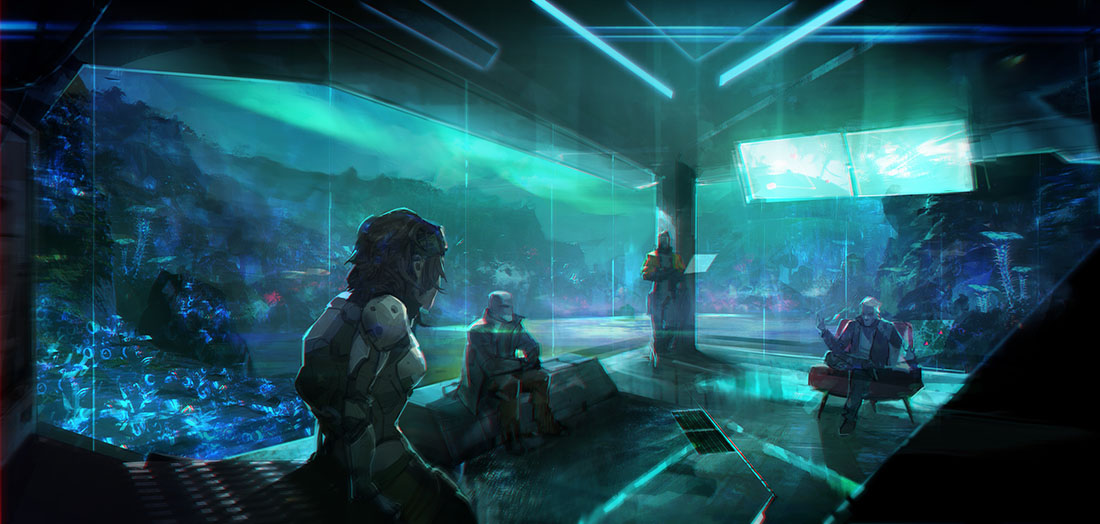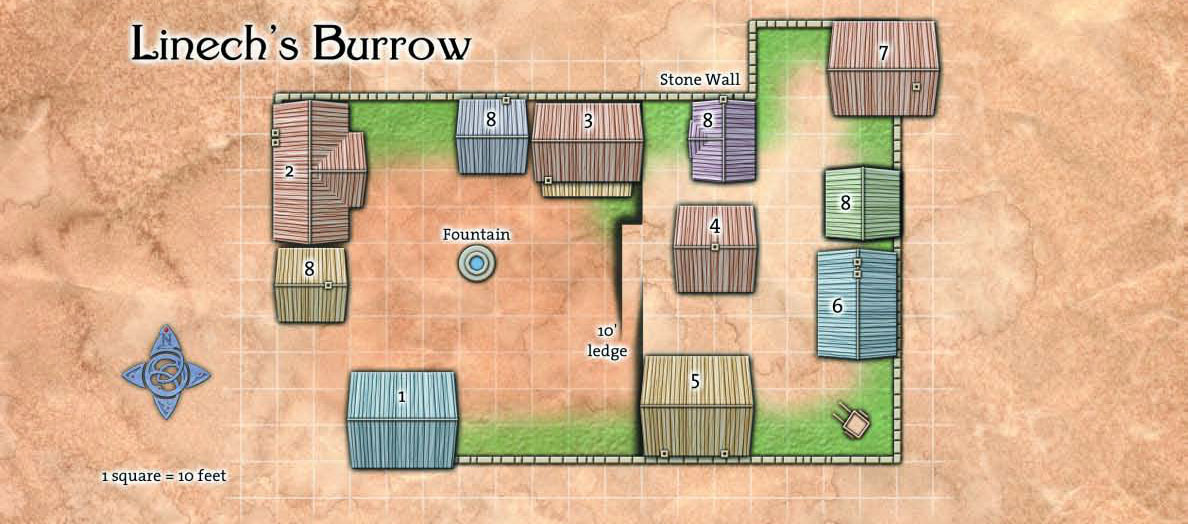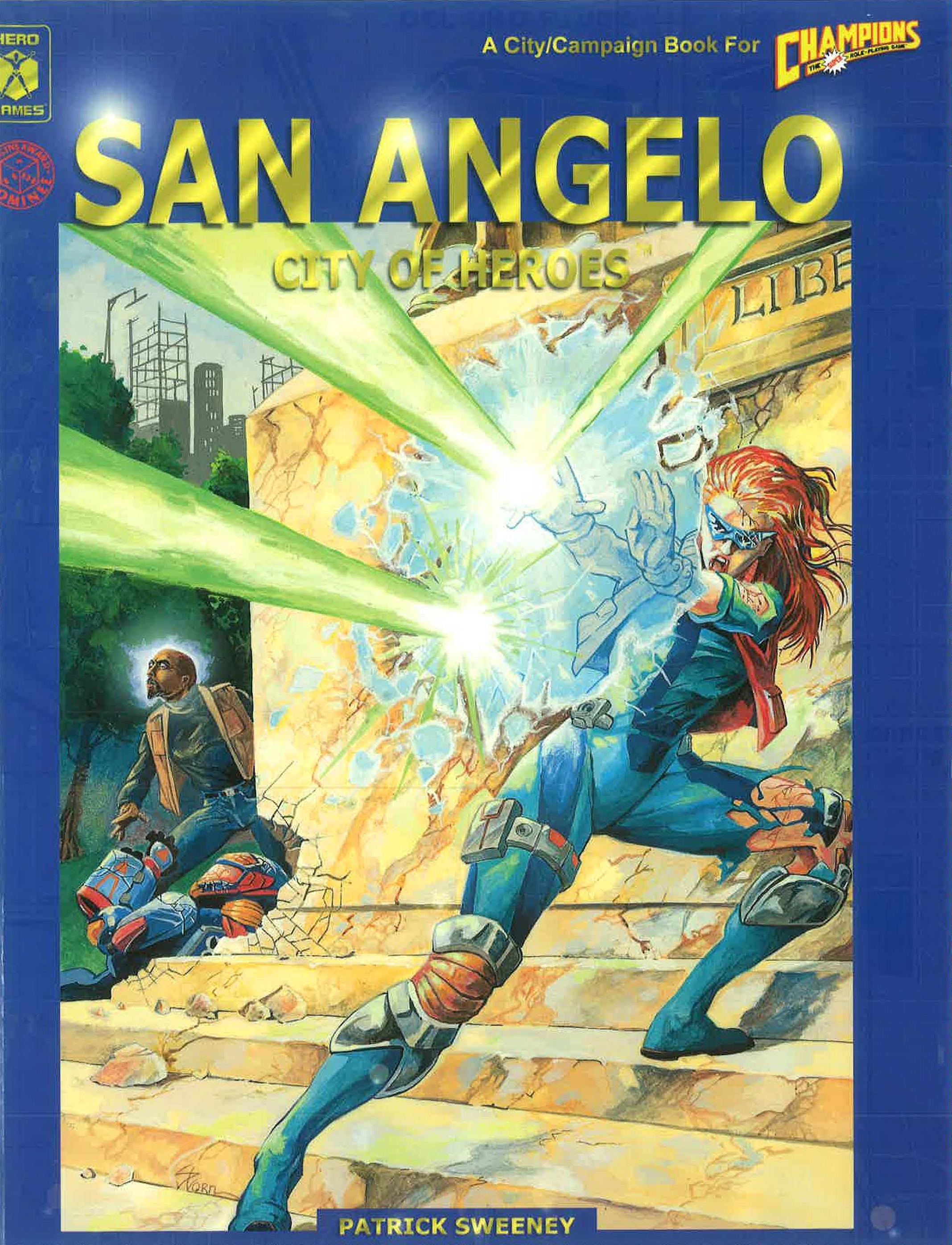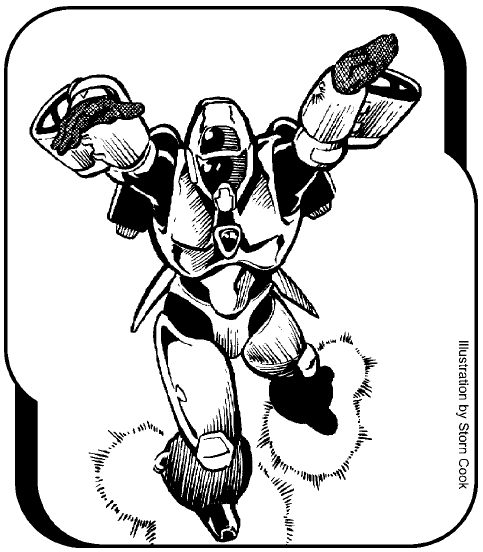As a sort of extended addendum to The Art of Rulings, this series is going to take a specific look at some common types of action resolution, with a particular eye on sharing the tips and tricks I’ve learned for making them work well.
We’ll start with those scenarios where a PC wants to conduct a general survey of a large body of knowledge in order to glean information that’s specifically useful to them. These tend to break down into two broad conceptual categories: Canvassing (talking to a large number of people to find the information you want) and Research (searching libraries, online resources, or other static databases for the information).
In most systems these days, you’ll find these two approaches ensconced as specific skills (making the most basic adjudication decision of which skill to roll relatively simple). For example, 3rd Edition D&D uses the Gather Information skill to cover canvassing. It’s not unusual, however, for investigation-focused systems to break them down into sub-categories. (For example, in Trail of Cthulhu you can use Cop Talk, Oral History, Streetwise, or even Credit Rating to canvass for information.)
Oddly, however, I can’t think of a system which actually groups these two broad categories — canvassing and research — into a single broader skill. (Perhaps because the traditional stat breakdowns derived from D&D often separate intellectual tasks like research from social tasks like canvassing?)
Unfortunately, it is slightly more common to find systems which, for whatever reason, lack one of these skills. Surprisingly, for example, Call of Cthulhu includes the ubiquitous Library Use skill for research tests, but lacks any clear skill for resolving canvassing. (Given my predilection for investigation-based scenarios, I generally find this lack incredibly annoying any more.) Defaulting to an ability check can often work, although we’ll discuss a few other options below.
Regardless of whether the PCs are researching or canvassing, the approach I take as a GM is roughly similar:
- Summarize the approach
- Make the key moment distinct
- Contextualize the information
EXAMPLE 1: D&D
For example, in a D&D campaign where the PCs are using the Gather Information skill to canvass for information about the Vladaam crime family, I might want to deliver a chunk of information like, “There are a lot of stories suggesting a long-running feud between Sheva Callaster and the Vladaams.”
First, I’ll say something like, “You start hitting up your contacts in all the dives around the Docks.” This summarizes the approach that’s being taken to gain the information. (As opposed to, say, attending a fancy soiree in the Nobles Quarter.)
Next, I’ll identify the key moment that they find the information: “In the Inn of the Lost Sailor, you find your old sailing partner One-Eyed Pete lost in the haze of his grit addiction.”
Finally, I contextualize the information: “Pete warns you that you’d be better off staying well clear of the Vladaams. People who mess with them tend to disappear. Only person that doesn’t seem to be true for is a lady by the name of Sheva Callaster: He once saw her get jumped by three Vladaam thugs and she chased them off as if she were brushing dust from her shoulder.”
EXAMPLE 2: ECLIPSE PHASE
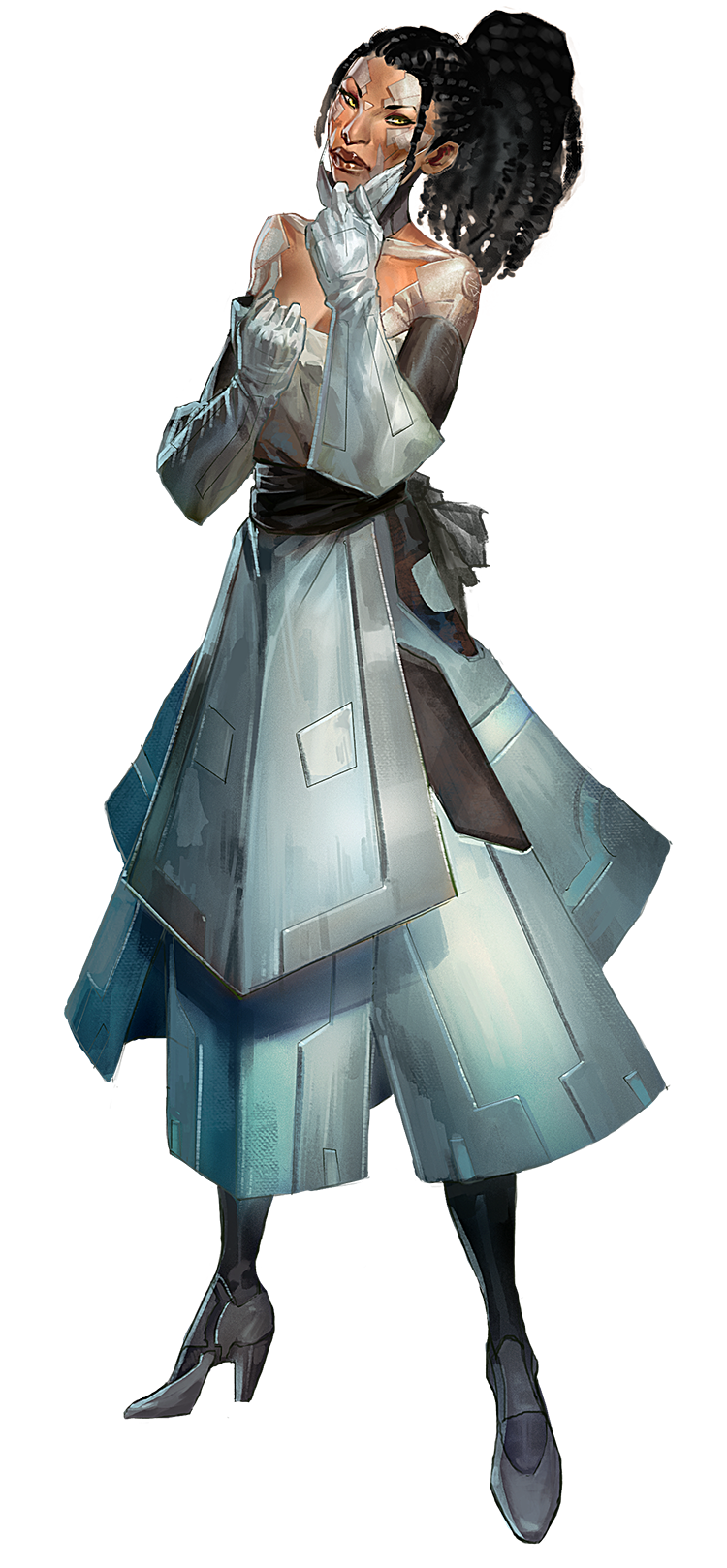 The same general approach can be used for Research tests in Eclipse Phase. Say you want to deliver a chunk of information like, “Achjima worked for Dolma Gope’s resleeving clinic.”
The same general approach can be used for Research tests in Eclipse Phase. Say you want to deliver a chunk of information like, “Achjima worked for Dolma Gope’s resleeving clinic.”
First, summarize the approach: “You start rooting through the corporate recruiting boards.”
Second, find the key moment: “You strike gold when you find a recent resumé for a young woman named Alicia Corey listing Achjima as a reference.”
Third, contextualize the information: “You hit the girl up. She’s turned pure infomorph because her body was ‘forcibly reclaimed’ by the local triads and she couldn’t afford a replacement. She’s eager to accept a few creds towards the new body fund and tells you all about her college days with Achjima. Sounds like Achjima has always been a radical interested in singularity seeking. She’s pretty sure Achjima is working for a woman named Dolma Gope now: Achjima was bitching about her the last time they talked.”
THE ALTERNATIVE
Player: I want to make a Gather Information test on the Vladaams.
GM: Roll it.
Player: 18
GM: You find out that Sheva Callaster has a long-running feud with them.Player: I’ll make a Research test on Achjima. 45 out of 60.
GM: Achjima worked at Dolma Gope’s resleeving clinic.
I suspect the reason we want to avoid this sort of barebones alternative is fairly obvious, but the anemic narration of outcome results in an atrophied fiction-mechanics cycle which is (a) boring, (b) divorced from the character’s experience, and (c) difficult or impossible to build off of interesting ways.
Adding just a little bit of specificity creates interest, helps to immerse the players into the game world, and provides the opportunity for both you and the players to build on the interaction. (For example, by coming back to speak with One-Eyed Pete in the future or asking Sheva Callaster for details about the assassination attempt One-Eyed Pete witnessed.)
SUMMARIZE THE APPROACH
Summarizing the approach is basically a statement of intention and method, right?
When it comes to gathering information, I tend to have a very low specificity threshold for triggering action resolution. Usually a statement like, “I’m going to ask around town to see if anyone has heard of greenfire.” or “I’m going to spend the afternoon researching the name ‘Azathoth’ in the local libraries.” is more than enough. In fact, moreso than any other skill, I’ll often just allow a simple “I’m going to use X skill to do Y” to move us into action resolution (i.e., “I’m going to make a Gather Information check on the Blood of Amber.” or “I’m going to use Library Use to research the ‘cold price’.”)
Why? Well, primarily because the players don’t necessarily know where the information exists to be found. That’s why they’re making the check in the first place, right? In actual play, it’s generally not interesting for the players to play ‘guess which book you should look in to find the answer’ games.
As the GM, of course, you can always set a higher threshold for activating character expertise. But this is why my approach starts with summarizing the approach: Because we’ve resolved the action at a very high level of abstraction, the first thing we want to do when narrating the outcome of that action is to make it more specific. As a GM, setting this broad parameter of how the search was conducted also makes it easier to improvise the more specific details that follow.
Of course, just like any other type of action, player expertise can always trump character expertise. In other words, they’re free to get more specific in describing how they track down a particular piece of information. (For example, rather than just “searching the library”, maybe they specifically hit up the morgue of a newspaper hoping to find older stories.) In the case of gathering information, it is insanely rare for this to work against the PCs finding the information they want (and would require them to basically look for it in a way which very specifically could not possibly work). On the other hand, particularly appropriate efforts can work to their advantage (lowering the difficulty of the test or perhaps negating the need for a test entirely).
THE KEY MOMENT
The key moment is where the PCs gain the information they’re looking for. (So the approach is how/where they’re looking for it; the key moment is when the approach pays off.) The most important thing about the key moment is its specificity: You’re taking the general concept (“asking people around the Docks”, “searching through corporate job postings”, “looking in the Restricted Section of the Hogwarts Library”) and creating something unique and particular (One-Eyed Pete, the girl who worked with Achjima, Moste Potente Potions by Phineas Bourne).
Framing Key Moments: Rather than simply summarizing the key moment, however, you can instead frame it as a scene.
The simplest example is framing to the moment where the PC approaches the NPC who has the information they want. Instead of summarizing what One-Eyed Pete has to say about Sheva Callaster and the Vladaams, for example, you instead say, “You’ve heard that One-Eyed Pete knows a thing or two about the Vladaams. You find him bellied up to the bar at the Inn of the Lost Sailor.” From there, you can then simply roleplay out the ensuing encounter (which will also contextualize the information, obviously).
Handouts can also be a form of this: The information is in a newspaper article, so you explain where they found it and hand the players a copy. The actual act of reading it is where the information is imparted.
You can also frame to a challenge. For example, your Research test brings you to Alicia Corey, but convincing her to talk might require additional social skill tests. (This effectively becomes a fortune in the middle technique and might be used to resolve a partial or complicated success on the Research test.)
A more elaborate version of the same is what I think of as “framing to a heist”: The PCs discover that the information they want is some place inaccessible, and now they’re going to have to figure out how to break in and get it.
CONTEXTUALIZE THE INFORMATION
At this point in the process you have a raw piece of data (“Sheva Callaster has a long-running feud with the Vladaams”) and you have the key moment where the PCs will gain that information (One-Eyed Pete). What you want to do is take these two pieces of the jig-saw puzzle and combine them in a way which is greater than the sum of its parts: The way One-Eyed Pete tells you the information reveals more about One-Eyed Pete, and it also gives a particular slant which colors and transforms that information.
The information would not have been the same (and would not have the same consequences) if it had come from anywhere else.
The importance of this can perhaps be most easily understood when it occurs in more specific circumstances:
- If the player specified a particular angle of approach, by having that choice influence the nature of the information they receive you’re building on and rewarding their creativity.
- If you’re framing to a heist, the nature of the information affects how the heist is carried out. (A kidnapped witness is very different from a file folder locked in a safe.)
And so forth. The key thing to understand is that even if you’re just going for the most basic, unprompted summarization of what happens, contextualizing the information not only makes it more interesting (and thus more of a reward for success) it will also affect (and also suggest) the ways in which the PCs can use that information.
Consider the example of Alicia Corey dishing information on Achjima’s relationship with Dolma Gope:
- Achjima was gossiping about how much he hates working with Dolma Gope.
- Achjima gave her Dolma Gope’s digital business card with an open-ended recommendation to get a job with her.
- Alicia is jealous of Dolma Gope, who she thinks (falsely) is having an affair with Achjima.
Every one of those conveys the same core nugget of information (Achjima works with Dolma Gope), but each one opens up different avenues: Achjima gossiping about how much he hates Dolma Gope might let them drive a wedge in their relationship when they meet with her, the business card might be a viable angle for gaining a meeting with Dolma Gope, and so forth.
(Note: You, as the GM, don’t think up the consequences or options of the contextualized information. That’s the player’s job. The point is that the mere act of contextualization implicitly opens up these opportunities which wouldn’t exist if you stick to the basic vanilla.)

